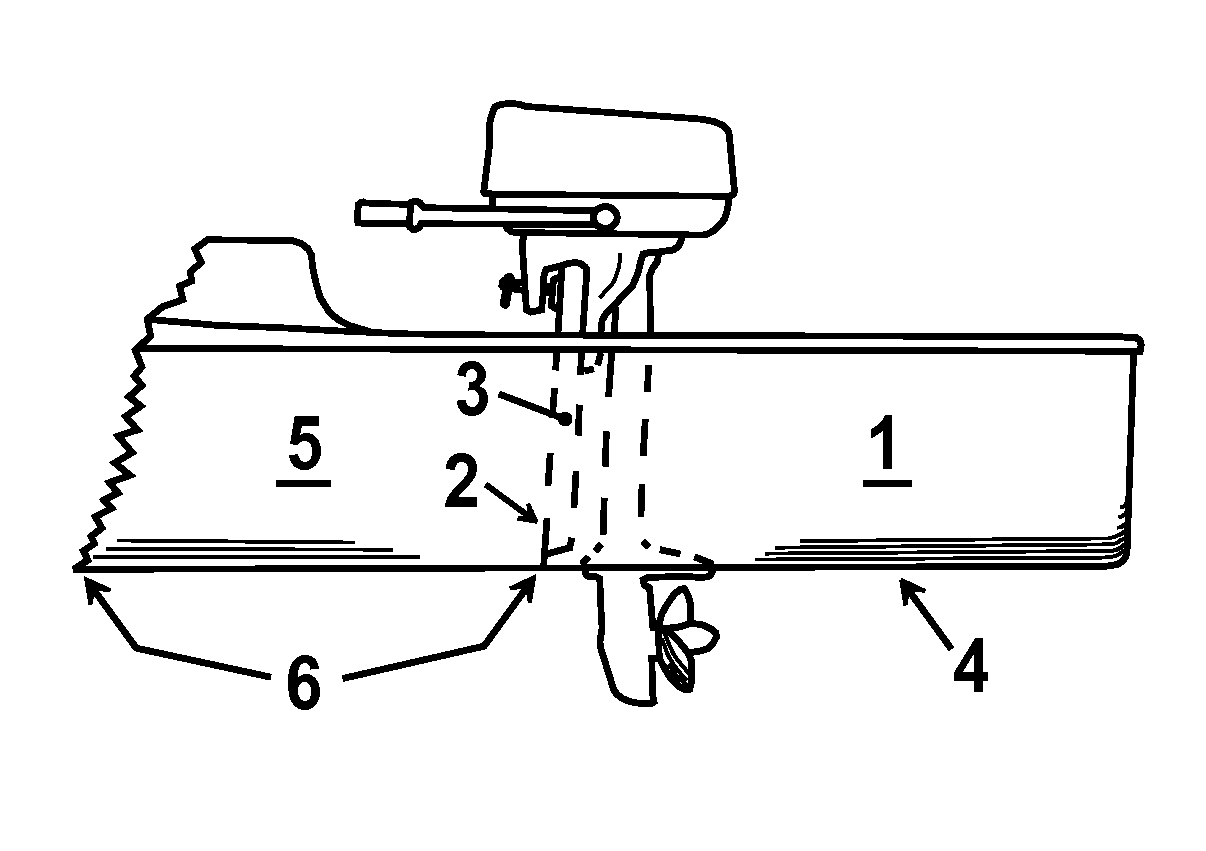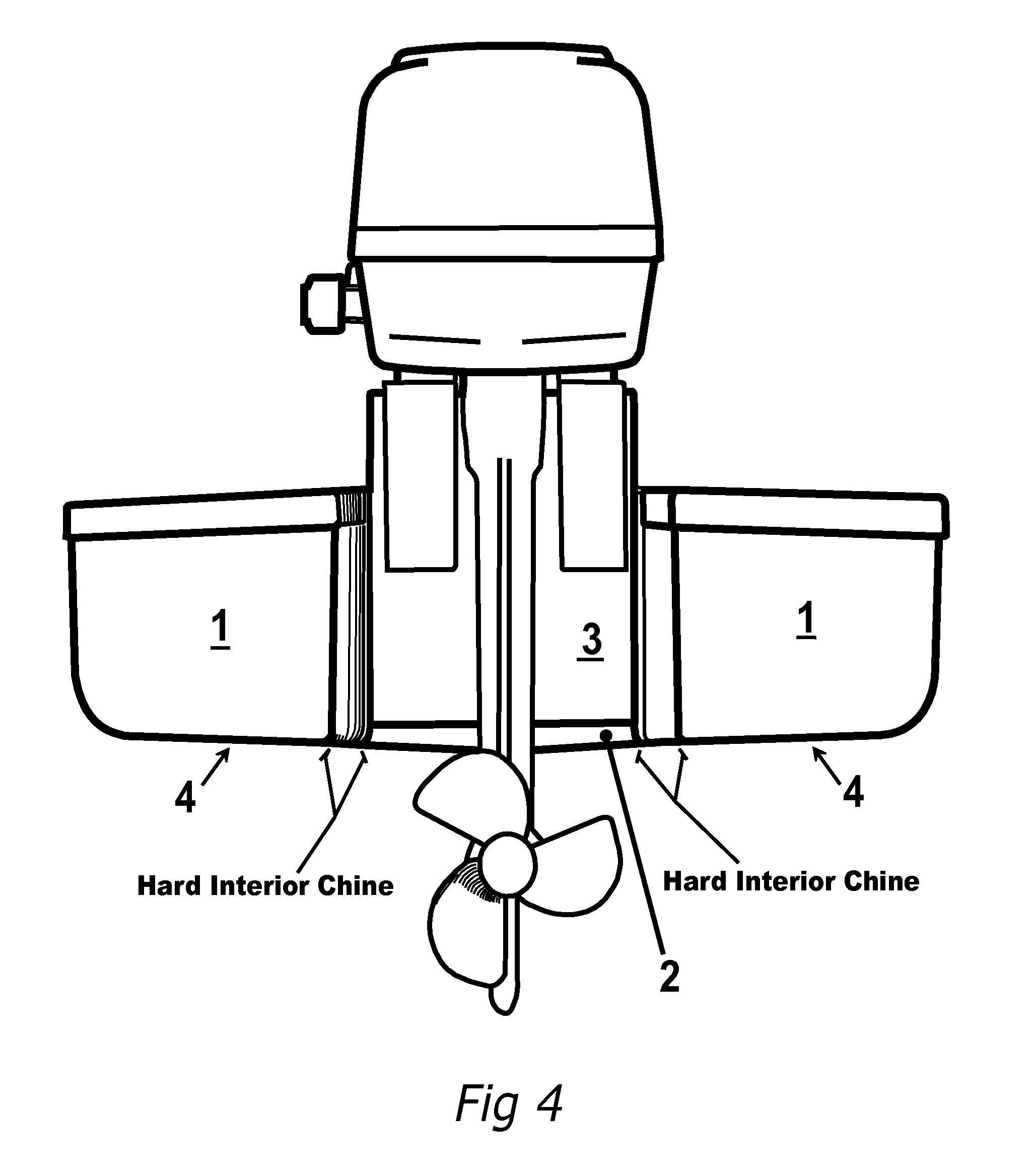Bouyant hull extension providing lateral and longitudinal control for lightweight hulls
a lightweight hull and hull extension technology, applied in special-purpose vessels, vessel construction, transportation and packaging, etc., can solve the problems of dragging tails (squatting), oversteering, and the rear sponson design seems less efficient, so as to improve improve the effect of tracking and turning control, and stable tracking in turns
- Summary
- Abstract
- Description
- Claims
- Application Information
AI Technical Summary
Benefits of technology
Problems solved by technology
Method used
Image
Examples
Embodiment Construction
[0091]While referring to the drawings, this invention consists of two sponsons 1 acting as buoyancy and flotation chambers attached in direct and complete contact without gaps at the edges with the transom 2 of any suitable hull 5. These sponsons have nearly parallel inner lower surfaces running parallel to the fore-aft centerline of the existing hull that form an Interior Hard Chine. This is a hard chine in that it is preferred that these edges have a small radius of curve consistent with the best manufacturing practice with the materials used. There is no need for the edges to form a sharp corner. The interior vertical edges of these parallel surfaces denoted by 8 in the drawings, form a well 11 starting at the inner transom 2 formed by the attachment or integration of the sponsons 1 to the hull 5. The well should form walls as close to perpendicular to the waterline as is practical. This definition of as practical shall be considered to mean no more than a 15° tumblehome vertical...
PUM
 Login to View More
Login to View More Abstract
Description
Claims
Application Information
 Login to View More
Login to View More - R&D
- Intellectual Property
- Life Sciences
- Materials
- Tech Scout
- Unparalleled Data Quality
- Higher Quality Content
- 60% Fewer Hallucinations
Browse by: Latest US Patents, China's latest patents, Technical Efficacy Thesaurus, Application Domain, Technology Topic, Popular Technical Reports.
© 2025 PatSnap. All rights reserved.Legal|Privacy policy|Modern Slavery Act Transparency Statement|Sitemap|About US| Contact US: help@patsnap.com



